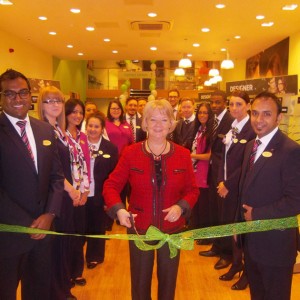 Christmas shoppers visiting the Lakeside Shopping Centre east of London have been lucky enough to catch a glimpse of an iconic character dressed in red and famous for generous giveaways.
Christmas shoppers visiting the Lakeside Shopping Centre east of London have been lucky enough to catch a glimpse of an iconic character dressed in red and famous for generous giveaways.
This was, of course, Specsavers founder Dame Mary Perkins, who arrived in Essex to open the multiple's 680th practice in the UK and first ever in a large-scale mall environment.
'It's slightly different to a normal high street because people are possibly more concentrated on doing their Christmas shopping rather than looking after their eyes,' Dame Mary said. 'That being said there are different promotions one can do to get people in over Christmas time.'
Register now to continue reading
Thank you for visiting Optician Online. Register now to access up to 10 news and opinion articles a month.
Register
Already have an account? Sign in here
